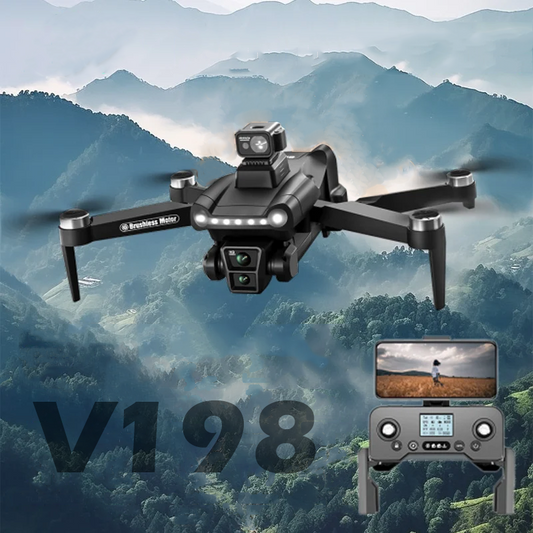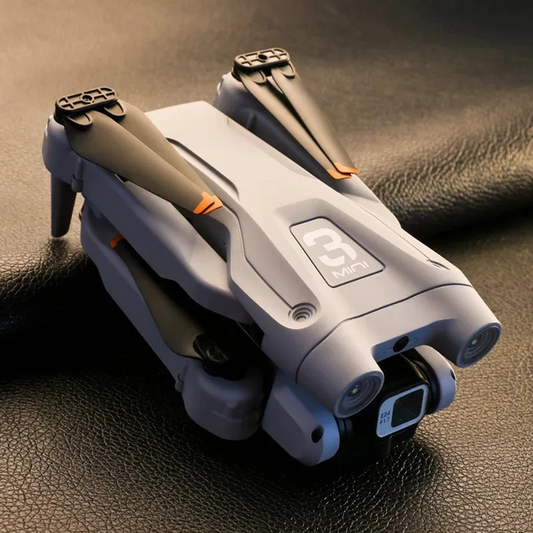How Drones are Transforming Community-Based Conservation Efforts

In the realm of conservation, innovation is the key to progress. Over the years, technological advancements have played a pivotal role in shaping conservation strategies, and one such innovation that's been making waves in the field is drones. These unmanned aerial vehicles (UAVs) have emerged as powerful tools, revolutionizing community-based conservation efforts worldwide. Let's delve into how drones are transforming the landscape of conservation initiatives, empowering communities to protect and preserve their natural habitats.
The Rise of Drones in Conservation
Drones, once predominantly associated with military and recreational use, have found a new purpose in conservation efforts. Equipped with high-resolution cameras, thermal imaging capabilities, and advanced sensors, drones provide conservationists with unprecedented access to remote and inaccessible areas. This aerial perspective offers valuable insights into wildlife populations, habitat structures, and environmental changes, facilitating data-driven conservation decisions.
1. Enhancing Surveying and Monitoring Efforts

Traditionally, conducting surveys and monitoring wildlife in vast and rugged terrains posed significant challenges for conservationists. However, drones have transformed these tasks into efficient and cost-effective endeavors. With their ability to cover large areas in a fraction of the time it takes for ground surveys, drones enable conservationists to gather comprehensive data on biodiversity, species distributions, and habitat conditions.
Moreover, drones equipped with thermal imaging technology have proven instrumental in detecting elusive species, such as nocturnal animals or those camouflaged within their surroundings. This capability significantly enhances wildlife monitoring efforts, contributing to more accurate population assessments and conservation planning.
2. Strengthening Anti-Poaching Measures

Poaching remains one of the most pressing threats to wildlife conservation worldwide. In response, conservationists are increasingly turning to drones as a tool for anti-poaching surveillance and enforcement. Drones equipped with real-time video streaming capabilities enable rangers to monitor vast areas and respond swiftly to suspicious activities, deterring poachers and protecting vulnerable species.
Furthermore, drones aid in the rapid identification of poaching hotspots, allowing authorities to deploy resources strategically and implement targeted conservation interventions. By bolstering anti-poaching measures, drones play a crucial role in safeguarding wildlife populations and combating illegal wildlife trade.
3. Facilitating Habitat Restoration and Management

Preserving biodiversity goes beyond protecting individual species; it encompasses the conservation and restoration of their natural habitats. Drones offer valuable assistance in habitat restoration efforts by providing detailed aerial imagery and spatial data. This information helps conservationists identify areas in need of restoration, assess vegetation cover, and monitor the effectiveness of restoration projects over time.
Additionally, drones equipped with precision agriculture technology can aid in ecosystem management by optimizing land use practices and mitigating human-wildlife conflicts. By promoting sustainable land management practices, drones contribute to the long-term health and resilience of ecosystems, benefiting both wildlife and local communities.
4. Engaging Communities in Conservation

One of the most significant advantages of drone technology in conservation is its ability to engage and empower local communities. By involving community members in drone operations, conservation organizations foster a sense of ownership and stewardship over natural resources. Training programs that teach community members to operate drones not only provide valuable skills but also create economic opportunities in remote areas where alternative livelihood options may be limited.
Moreover, drones serve as powerful educational tools, allowing communities to learn about wildlife conservation and environmental stewardship firsthand. Through aerial imagery and interactive drone demonstrations, residents gain a deeper understanding of the importance of preserving their natural heritage and are inspired to participate in conservation initiatives.
Overcoming Challenges and Ethical Considerations
While drones offer immense potential for conservation, their use is not without challenges and ethical considerations. Privacy concerns, airspace regulations, and the risk of wildlife disturbance are among the issues that must be addressed responsibly. Conservationists must adhere to strict ethical guidelines and ensure that drone operations prioritize the well-being of both wildlife and human communities.
Furthermore, overcoming technical barriers, such as limited battery life and inclement weather conditions, remains a persistent challenge in some regions. Collaborative efforts between conservation organizations, technology developers, and local stakeholders are essential to overcome these challenges and maximize the benefits of drone technology for conservation.
In conclusion, drones are revolutionizing community-based conservation efforts by providing innovative solutions to long-standing challenges. From enhancing surveying and monitoring efforts to strengthening anti-poaching measures and facilitating habitat restoration, drones offer a versatile toolkit for conservationists worldwide. By engaging and empowering local communities, drones not only contribute to the protection of biodiversity but also foster sustainable development and environmental stewardship. As technology continues to evolve, the potential of drones in conservation remains vast, promising a brighter future for both wildlife and humanity.
Explore a variety of drones at our online drone store.Happy Flying!









